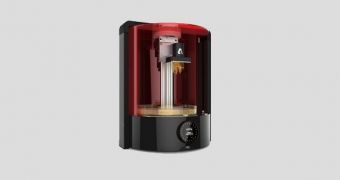Autodesk has just revealed its plans in regard to the 3D printing industry, and they are a bit broader than what some may have suspected, as they aren't restricted solely to the software side of things.
Autodesk is a company that makes software for pretty much every industry out there, like architecture, engineering, construction, entertainment, media and manufacturing.
AutoDesk AutoCad is the flagship product, a 3D virtual design program that has several sub-iterations, each suited best for a certain domain, like architecture (AutoCAD Architecture, formerly Architectural Desktop) and AutoCAD MEP (formerly Autodesk Building Systems)
Now, the company is setting up its strategy for the 3D printing industry. Or, rather, it has set up its strategy and is preparing to get it moving.
First off, it will release a free operating system for 3D printers, one that is supposed to give the industrial field a kick strong enough to get it flowing smoothly.
Autodesk likened it to how the Google Android operating system managed to turn the smartphone into a worldwide commodity.
Right now, Android is included for free by all phone makers, and Autodesk wants 3D printers to be shipped in a similar fashion.
The company CEO, Carl Bass, is not really impressed with the existence of 40 different types of printer software. He blames the slow evolution of the market on it.
We've actually seen plenty of evidence that suggests the 3D printing segment is actually evolving at a rapid pace, but Autodesk clearly doesn't share that view.
“There’s been a disconnect between designing objects and being able to print them,” said Carl Bass, chief executive of Autodesk. “I saw there were 40 different types of printer software, and that is what is holding this back.”
The second part of the company's strategy is its own 3D printer aimed at the “midmarket,” which means a price of around $5,000 / €5,000.
Well, that's what they sell for now. Time could bring with it a general cut in costs, though printing objects by projecting light on a photosensitive polymer is a more refined technique than for other printers, so a price premium will always be there.
The printer will be mainly intended for architectural projects, which makes us wonder if some of its elements can be converted into something like the house-building 3D printer we learned about the other day. If not the printer, the software/OS will be a sure win in that area of the market.

 14 DAY TRIAL //
14 DAY TRIAL //